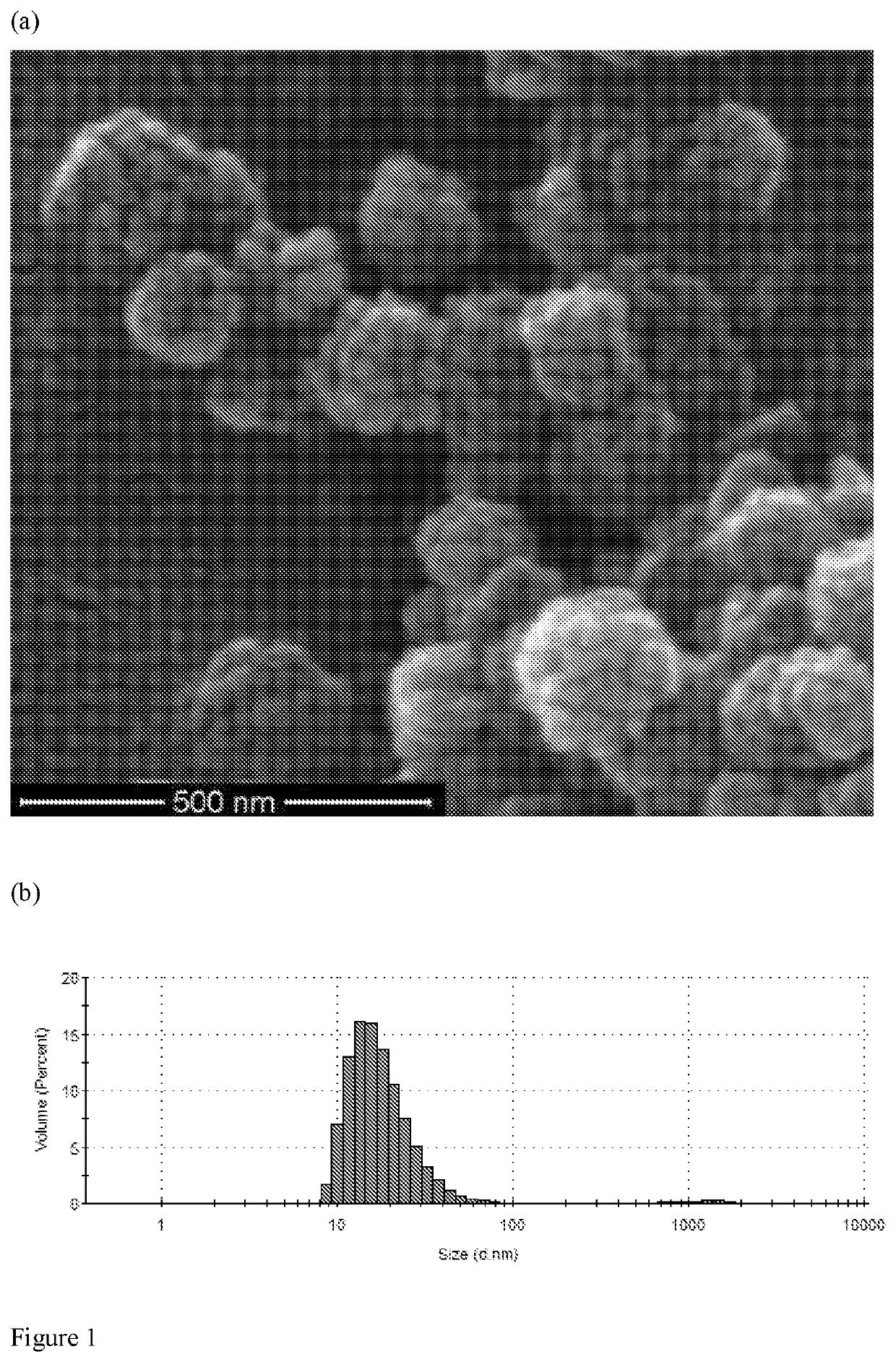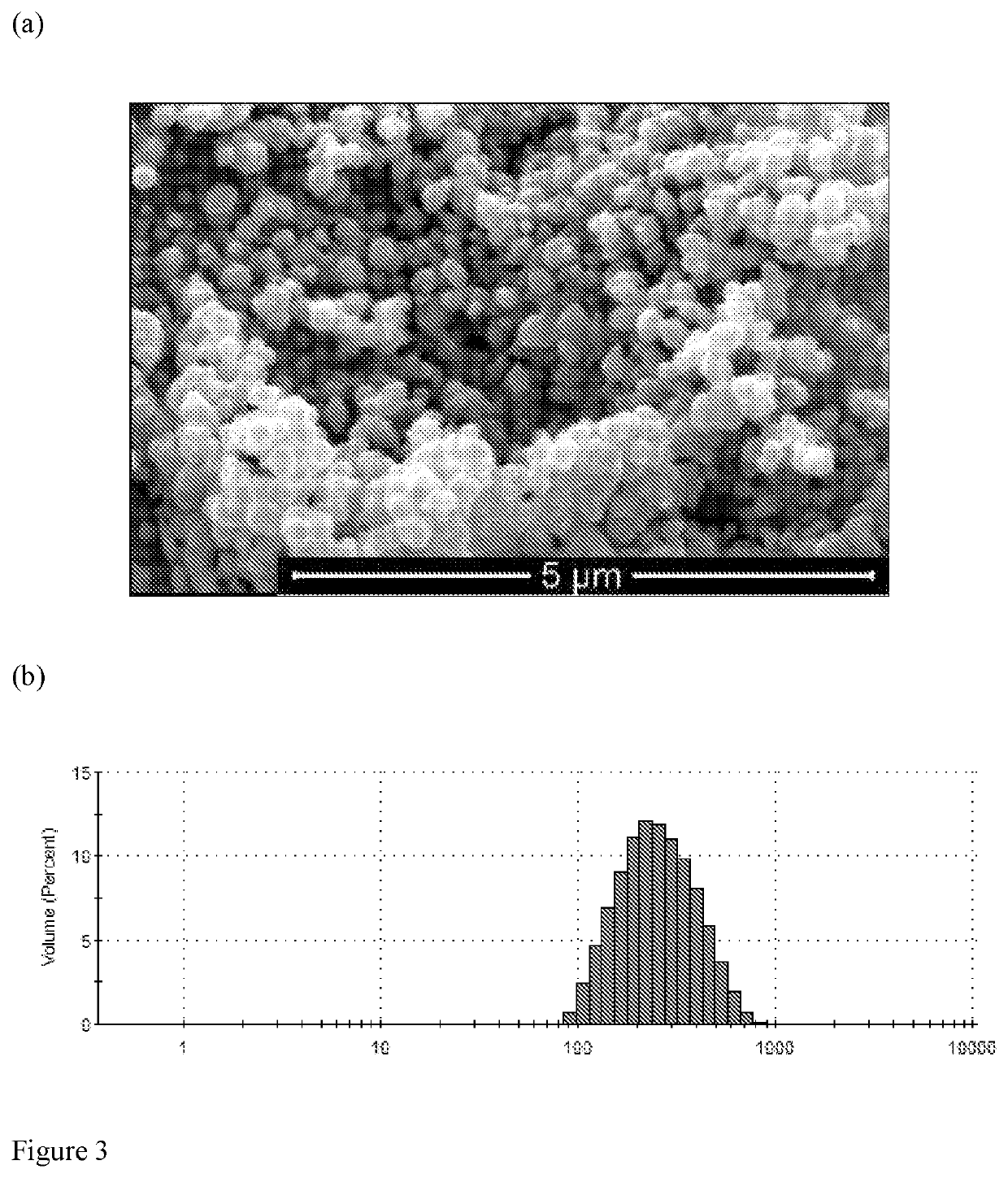Calcium peroxides nanoparticles as adjuvant therapy
a technology of calcium peroxide and nanoparticles, which is applied in the direction of energy-modified materials, disrupted materials, non-active ingredients of pharmaceuticals, etc., can solve the problems of affecting the ability of large-scale solid tumours to be treated, the limited technique, and the inability of light to penetrate deeply through human tissue, so as to improve the oxygenation of tumours
- Summary
- Abstract
- Description
- Claims
- Application Information
AI Technical Summary
Benefits of technology
Problems solved by technology
Method used
Image
Examples
example 5
tion of Singlet Oxygen Generation
[0138]The ability of the uncoated CaO2 NPs to enhance PDT mediated singlet oxygen generation was determined using the singlet oxygen probe sensor green (SOSG). SOSG is inherently non-fluorescent but reacts with singlet oxygen to generate a fluorescent product with the fluorescence intensity being proportional to the amount of singlet oxygen generated (Faulkner et al., Free Radical Biology and Medicine, 15(4): 447-451, 1993).
[0139]A de-oxygenated PBS solution (2:98; EtOH:H2O) containing SOSG (2.5 μM) and the sensitiser Rose Bengal (5 μM) was prepared and an ethanol solution containing CaO2 NPs (35.6 μM) added. Immediately, the solution was then irradiated with white light for 5 min at which point the fluorescence intensity at 530 nm was measured using a fluorescence spectrometer. Control experiments in the absence of the CaO2 NPs (i.e. RB, SOSG and light) and CaO2NPs only (i.e. CaO2 NPs, SOSG, and light) were also conducted for comparative purposes. T...
PUM
| Property | Measurement | Unit |
|---|---|---|
| diameter | aaaaa | aaaaa |
| pH | aaaaa | aaaaa |
| pH | aaaaa | aaaaa |
Abstract
Description
Claims
Application Information
 Login to View More
Login to View More - R&D
- Intellectual Property
- Life Sciences
- Materials
- Tech Scout
- Unparalleled Data Quality
- Higher Quality Content
- 60% Fewer Hallucinations
Browse by: Latest US Patents, China's latest patents, Technical Efficacy Thesaurus, Application Domain, Technology Topic, Popular Technical Reports.
© 2025 PatSnap. All rights reserved.Legal|Privacy policy|Modern Slavery Act Transparency Statement|Sitemap|About US| Contact US: help@patsnap.com



